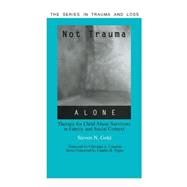
Note: Supplemental materials are not guaranteed with Rental or Used book purchases.
Purchase Benefits
What is included with this book?
| Series Foreword | xi | ||||
| Foreword | xv | ||||
| Preface | xix | ||||
| Acknowledgments | xxvii | ||||
| PART I ABUSE IN CONTEXT: THE CONCEPTUAL FRAMEWORK | |||||
|
3 | (9) | |||
|
4 | (2) | |||
|
6 | (2) | |||
|
8 | (4) | |||
|
12 | (16) | |||
|
13 | (3) | |||
|
16 | (10) | |||
|
26 | (2) | |||
|
28 | (20) | |||
|
29 | (3) | |||
|
32 | (4) | |||
|
36 | (2) | |||
|
38 | (2) | |||
|
40 | (2) | |||
|
42 | (3) | |||
|
45 | (3) | |||
|
48 | (11) | |||
|
48 | (4) | |||
|
52 | (3) | |||
|
55 | (2) | |||
|
57 | (2) | |||
|
59 | (11) | |||
|
60 | (1) | |||
|
61 | (4) | |||
|
65 | (5) | |||
|
70 | (15) | |||
|
71 | (1) | |||
|
71 | (1) | |||
|
72 | (1) | |||
|
73 | (2) | |||
|
75 | (2) | |||
|
77 | (8) | |||
| PART II TREATMENT IN CONTEXT: FOUNDATIONS OF THE THERAPEUTIC MODEL | |||||
|
85 | (19) | |||
|
85 | (2) | |||
|
87 | (5) | |||
|
92 | (1) | |||
|
93 | (3) | |||
|
96 | (2) | |||
|
98 | (3) | |||
|
101 | (1) | |||
|
102 | (2) | |||
|
104 | (14) | |||
|
104 | (2) | |||
|
106 | (4) | |||
|
110 | (1) | |||
|
111 | (2) | |||
|
113 | (2) | |||
|
115 | (3) | |||
|
118 | (13) | |||
|
118 | (3) | |||
|
121 | (10) | |||
| PART III ACQUIRING TOOLS FOR DAILY LIVING: THE STRUCTURE OF THE THERAPEUTIC PROCESS | |||||
|
131 | (23) | |||
|
133 | (2) | |||
|
135 | (2) | |||
|
137 | (2) | |||
|
139 | (1) | |||
|
140 | (6) | |||
|
146 | (1) | |||
|
147 | (1) | |||
|
148 | (6) | |||
|
154 | (24) | |||
|
155 | (2) | |||
|
157 | (3) | |||
|
160 | (2) | |||
|
162 | (5) | |||
|
167 | (1) | |||
|
168 | (2) | |||
|
170 | (1) | |||
|
171 | (7) | |||
|
178 | (20) | |||
|
179 | (1) | |||
|
180 | (1) | |||
|
181 | (1) | |||
|
182 | (6) | |||
|
188 | (3) | |||
|
191 | (7) | |||
|
198 | (15) | |||
|
198 | (2) | |||
|
200 | (1) | |||
|
201 | (7) | |||
|
208 | (5) | |||
|
213 | (9) | |||
|
213 | (2) | |||
|
215 | (1) | |||
|
216 | (3) | |||
|
219 | (3) | |||
|
222 | (19) | |||
|
222 | (3) | |||
|
225 | (6) | |||
|
231 | (2) | |||
|
233 | (8) | |||
| PART IV CONCLUSION | |||||
| Epilogue: The Inextricable Tie | 241 | (4) | |||
| References | 245 | (12) | |||
| Subject Index | 257 | (12) | |||
| Author Index | 269 |
The New copy of this book will include any supplemental materials advertised. Please check the title of the book to determine if it should include any access cards, study guides, lab manuals, CDs, etc.
The Used, Rental and eBook copies of this book are not guaranteed to include any supplemental materials. Typically, only the book itself is included. This is true even if the title states it includes any access cards, study guides, lab manuals, CDs, etc.